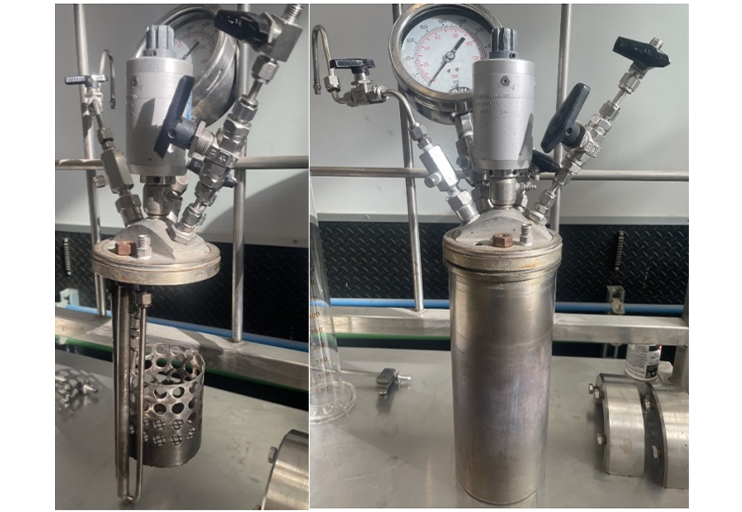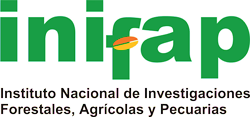Sustainable extraction of cellulosic microfibers from agro-industrial residues of banana
DOI:
https://doi.org/10.29312/remexca.v16i30.4041Keywords:
Musa cavendish, reactor, steam explosion, treatmentAbstract
Natural cellulose fibers have properties and structures that make them suitable for a variety of uses, such as the manufacture of textiles, composites, pulp and paper. In addition to this, there is a growing interest in the use of alternative materials with low environmental impact due to the problems related to the environment; therefore, it is necessary to implement new sources and processes to obtain cellulose. The research began in 2024. The purpose was to obtain crystalline cellulose microfibers from agro-industrial residues from banana cultivation through processes with a lower environmental impact. The cellulose fibers were obtained from the fibers of the pseudo-stem of bananas, variety Musa cavendish, using steam explosion treatments carried out in a thermal reactor and bleaching processes with 2% NaClO, obtaining soft and fragile cellulose microfibers. The TGA analysis showed that the cellulose fibers obtained from banana fibers presented greater thermal stability due to the removal of hemicellulose, which could be corroborated by FT-IR. Steam explosion treatment is a viable and environmentally friendly alternative for obtaining cellulose microfibers from banana fibers and other agro-industrial waste.
Downloads
References
Aridi, A. S.; Chin, N. L.; Ishak, N. A.; Yusof, N. N. M.; Kadota, K.; Manaf, Y. N. and Yusof, Y. A. 2021. Effect of sodium hypochlorite concentration during pre-treatment on isolation of nanocrystalline cellulose from Leucaena leucocephala (Lam.) Mature Pods. BioResources. 16(2):3137-3158.
Aridi, A. S.; Ling, C. N.; Ishak, N. A.; Nor Nadiah, M. Y.; Ahmed, M. F. M. and Yusof, Y. A. 2020. Structural FTIR analysis of cellulose functional groups isolated from Leucaena leucocephala pods using different bleaching agents. AgriRxiv.
Barciela, P. A.; Perez-Vazquez, A.; Carpena, M. R.; Seyyedi-Mansour, S.; Donn, P.; Fraga-Corral, M.; Otero, P.; Xiao, J.; Simal-Gandara, J.; Prieto, M. A. and Cassani, L. 2023. Insight into steam explosion pretreatment of sugarcane bagasse for bioethanol production †. Engineering proceedings. 37(1):1-6.
Capári, D.; Dörgő, G. and Dallos, A. 2016. Comparison of the effects of thermal pretreatment, steam explosion and ultrasonic disintegration on digestibility of corn stover. Journal of Sustainable Development of Energy, Water and Environment Systems. 4(2):107-126.
Deepa, B.; Abraham, E.; Cherian, B. M.; Bismarck, A.; Blaker, J. J.; Pothan, L. A.; Leao, A. L.; Souza, S. F. and Kottaisamy, M. 2011. Structure, morphology and thermal characteristics of banana nano fibers obtained by steam explosion. Bioresource Technology. 102(2):1988-1997.
Godara, M. S. S. 2019. Effect of chemical modification of fiber surface on natural fiber composites: a review. Materials today: proceedings. 18(7):3428-3434.
Gupta, U. S.; Dhamarikar, M.; Dharkar, A.; Chaturvedi, S.; Tiwari, S. and Namdeo, R. 2020. Surface modification of banana fiber: a review. Materials today: proceedings. 43(7):904-915.
Ibrahim, M. M.; Agblevor, F. A. and El-Zawawy, W. K. 2010. Isolation and characterization of cellulose and lignin from steam-exploded lignocellulosic biomass. BioResources. 5(1):397-418.
Kataria, R.; Mol, A.; Schulten, E.; Happel, A. and Mussatto, S. I. 2017. Bench scale steam explosion pretreatment of acid impregnated elephant grass biomass and its impacts on biomass composition, structure and hydrolysis. Industrial Crops and Products. 106(8):48-58.
Ma, C.; Ni, L.; Guo, Z.; Zeng, H.; Wu, M.; Zhang, M. and Zheng, B. 2022. Principle and application of steam explosion technology in modification of food fiber. Foods. 11(21):1-19.
Meng, F.; Zhang, X.; Yu, W. and Zhang, Y. 2019. Kinetic analysis of cellulose extraction from banana pseudo-stem by liquefaction in polyhydric alcohols. Industrial Crops and Products. 137(5):377-385.
Parre, A.; Karthikeyan, B. Y.; Balaji, A. and Udhayasankar, R. 2020. Investigation of chemical, thermal and morphological properties of untreated and NaOH treated banana fiber. Materials today: proceedings. 22(6):347-352.
Pérez-Limiñana, M. A.; Pérez-Aguilar, H.; Ruzafa-Silvestre, C.; Orgilés-Calpena, E. and Arán-Ais, F. 2022. Effect of processing time of steam explosion for the extraction of cellulose fibers from phoenix canariensis palm leaves as potential renewable feedstock for materials. Polymers. 14(23):5206.
Rajwade, J. M.; Chikte, R. G. and Paknikar, K. M. 2020. Nanomaterials: new weapons in a crusade against phytopathogens. Applied Microbiology and Biotechnology. 104(4):1437-1461. https://doi.org/10.1007/s00253-019-10334-y.
Reddy, R. A.; Yoganandam, K. and Mohanavel, V. V. 2020. Effect of chemical treatment on natural fiber for use in fiber reinforced composites Review. Materials today: proceedings. 33(2):2996-2999.
Ronald-Aseer, J.; Sankaranarayanasamy, K.; Jayabalan, P.; Natarajan, R. andy Priya-Dasan, K. 2013. Morphological, physical, and thermal properties of chemically treated banana fiber. Journal of Natural Fibers. 10(4):365-380.
Sarker, T. R.; Pattnaik, F.; Nanda, S.; Dalai, A. K.; Meda, V. S. and Naik, S. N. 2021. Hydrothermal pretreatment technologies for lignocellulosic biomass: a review of steam explosion and subcritical water hydrolysis. Chemosphere. 284(4):131372.
Shamsudin, S.; Kamal-Bahrin, E.; Hassan, M. A. and Shirai, Y. 2024. Chemical free saturated steam pretreatment of oil palm empty fruit bunch for improved enzymatic saccharification. Journal of Wood Chemistry and Technology. 44(1):44-63.
Sheng, Z.; Gao, J.; Jin, Z.; Dai, H.; Zheng, L. and Wang, B. 2014. Effect of steam explosion on degumming efficiency and physicochemical characteristics of banana fiber. Journal of Applied Polymer Science. 131(16):1-9.
Xu, J.; Zhou, G. and Li, J. 2017. Effects of steam explosion pretreatment on the chemical composition and fiber characteristics of cornstalks. Journal of Bioresources and Bioproducts. 2(4):153-157.

Published
How to Cite
Issue
Section
License
Copyright (c) 2025 Revista Mexicana de Ciencias Agrícolas

This work is licensed under a Creative Commons Attribution-NonCommercial 4.0 International License.
The authors who publish in Revista Mexicana de Ciencias Agrícolas accept the following conditions:
In accordance with copyright laws, Revista Mexicana de Ciencias Agrícolas recognizes and respects the authors’ moral right and ownership of property rights which will be transferred to the journal for dissemination in open access. Invariably, all the authors have to sign a letter of transfer of property rights and of originality of the article to Instituto Nacional de Investigaciones Forestales, Agrícolas y Pecuarias (INIFAP) [National Institute of Forestry, Agricultural and Livestock Research]. The author(s) must pay a fee for the reception of articles before proceeding to editorial review.
All the texts published by Revista Mexicana de Ciencias Agrícolas —with no exception— are distributed under a Creative Commons License Attribution-NonCommercial 4.0 International (CC BY-NC 4.0), which allows third parties to use the publication as long as the work’s authorship and its first publication in this journal are mentioned.
The author(s) can enter into independent and additional contractual agreements for the nonexclusive distribution of the version of the article published in Revista Mexicana de Ciencias Agrícolas (for example include it into an institutional repository or publish it in a book) as long as it is clearly and explicitly indicated that the work was published for the first time in Revista Mexicana de Ciencias Agrícolas.
For all the above, the authors shall send the Letter-transfer of Property Rights for the first publication duly filled in and signed by the author(s). This form must be sent as a PDF file to: revista_atm@yahoo.com.mx; cienciasagricola@inifap.gob.mx; remexca2017@gmail.
This work is licensed under a Creative Commons Attribution-Noncommercial 4.0 International license.


